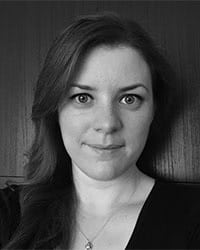The Purpose of this Section:
To ensure that an employer can reach you by their preferred method of communication if they want to follow up on your application.
The personal details should be the easiest section of your CV to write – it’s just a few lines that sit at the top of your document, and the information is all factual.
But there are still some key Dos and Don’ts, as well as a few little tips to keep in mind when writing this section of your CV.
We’ll use Sherlock Holmes as our example…
The Personal Details you Should Definitely Include on Your CV
Name
This should really stand out on the page and will typically be bigger than all other text on the document. As a minimum, you should include your full first name, and full surname.
E.g:
Sherlock Holmes
Not:
S. Holmes
Mr. Holmes
Sherlock H.
If you wish, you can also include:
Titles (e.g. Miss, Dr, Prof, etc)
Applicable post-nominal letters (e.g. BSc, MA, PhD, etc)
Make sure that all other correspondence with the company can be clearly connected to the name you use here. If you go by a shortened version of your name, for example, you can either use that here or you include it in brackets after your full name to avoid any confusion when you sign your emails with it.
Address
You should ideally include your full postal address.
E.g:
221b Baker Street, London, NW1 6XE
If you’re uncomfortable giving your full address for some reason, be as specific as you can. You might include something like:
Baker Street, London
London, NW1 6XE
And if you’re applying for a role that would require you to relocate, you might include “Willing to relocate” next to your address to show that you’ve given this thought.
Telephone
This should be the most reliable contact telephone number you can be reached on. Employers can (and do!) follow up by phone, so it’s important this is accurate and includes any necessary dialling codes.
E.g:
07987 654321
If Sherlock were applying for a job outside of the UK, he would list it as:
+44 7987 654321
You can list both a landline number and mobile number if you want, but these days, it’s perfectly acceptable to only list a mobile number.
Email address
You should use a professional sounding email address – something as close to [yourname]@[emailprovider].com as possible.
E.g:
SherlockHolmes@gmail.com
s.holmes@yahoo.co.uk
sherlockh@hotmail.com
If you currently use something different, it’s worth the effort to create a professional one – you can always set it up to forward to the one you check all the time. There can be a lot inferred about you from the email address you use, so make sure it’s representing you well.
Also remember that some email providers link a photo to your email account that is visible to recipients (Gmail is the biggest example of this) – so make sure that you’re using this as another place to create the right impression.
Other Details you Might Include
LinkedIn link
Hopefully you’ve spent time writing a great LinkedIn profile, so this is actually a huge opportunity to sell yourself a little more. Many employers won’t look at the LinkedIn information you put here but for those that do, you’ve just bought yourself the opportunity to tell them more that you can fit on the 2 pages of your CV.
If you’re listing LinkedIn details, it should be the direct link that someone can click on or type into a browser and see your profile. Don’t bother adding “LinkedIn” to this section if all you’re going to do is write the name you’re listed under – they have this information already!
Top tip: Make sure your LinkedIn privacy settings are set so that you can see who’s viewing your profile!
Nationality & Visa status
If you’re applying for a job in a different country but have the appropriate visa to work there, you might include your visa status here. This can be a quick way to make sure an employer isn’t left wondering about this.
What you SHOULDN’T include
This section of your CV is a good example of places where “things change”. There are a few things that used to be common, that you shouldn’t include any more.
Do NOT include:
- Date of birth or age
- Marital status
- Gender
- Nationality (unless for the reasons outlined above)
- Place of birth
- A photo
Also, don’t write “Curriculum Vitae” – people know what this document is, don’t waste space telling them.
Formatting the Personal Details Section
Don’t let the personal details section take up too much room. Nothing here is going to persuade the employer you’re the right person for the job, so get the facts on the page as efficiently as possible and move on to the more persuasive sections.
You should format this section using a consistent margin or centring it on the page (this is the only section we’d consider centering).
You don’t really have to use labels for each piece of information, it’s quite self explanatory.
People often default to putting one piece of information on each line, and writing their address like they would on an envelope. This is fine if you have the space to do it but if you’re struggling to keep your CV to 2 pages long, this is a great place to save some space by changing that (check out the examples below).
Example Layouts
So let’s put that all together, and look at a few suggested layouts for the Personal Details section…
Sherlock Holmes
221b Baker Street, London, NW1 6XE
07987 654321
s.holmes@gmail.com
Sherlock Holmes
221b Baker Street, London, NW1 6XE
Tel: 07987 654321 * Email: s.holmes@gmail.com
Sherlock Holmes (s.holmes@gmail.com)
221b Baker Street, London, NW1 6XE – 07987 654321
About the Author
Claire Wilson
Content Marketing and Career Coaching
Claire runs GetReskilled’s Advanced Career Coaching Programme – our specially devised job hunting course that helps our trainees take that final step into employment by leading them through the job hunting process. She is extremely enthusiastic about helping people reach their final goal of employment in their new career path.
Claire has a BSc (Hons) in Medical Biology from Edinburgh University and spent 7 years working in the pharmaceutical and medical device industries.


Post Your Comments Below